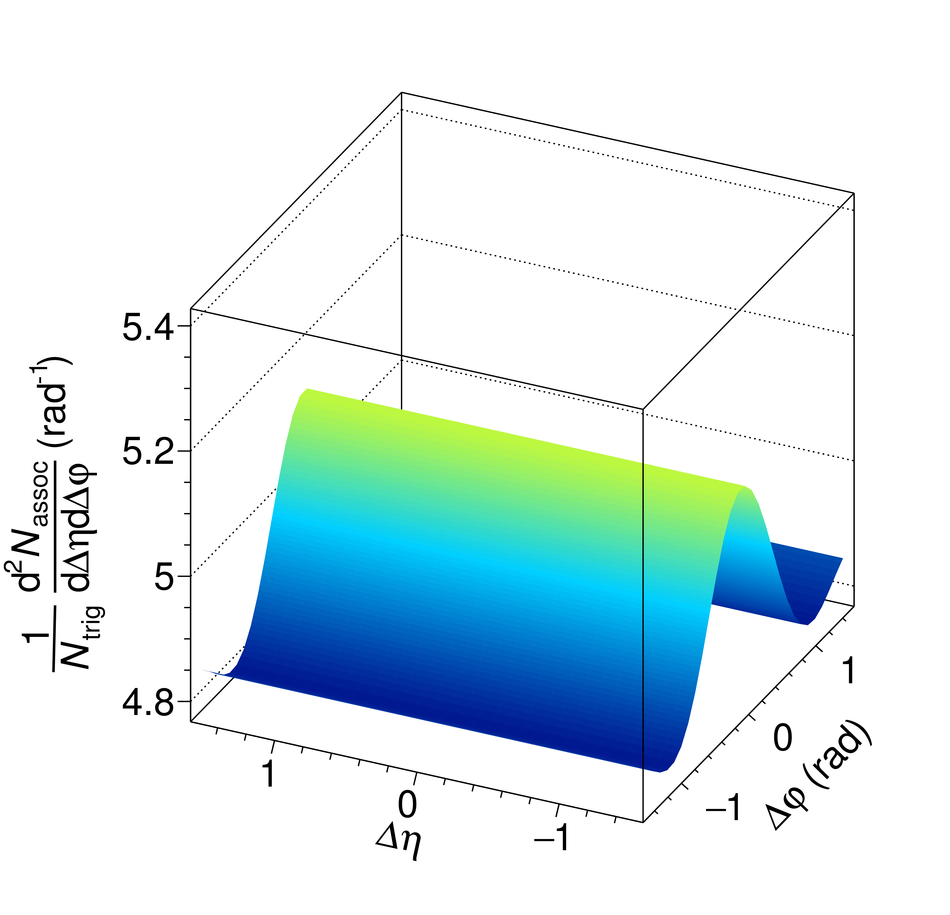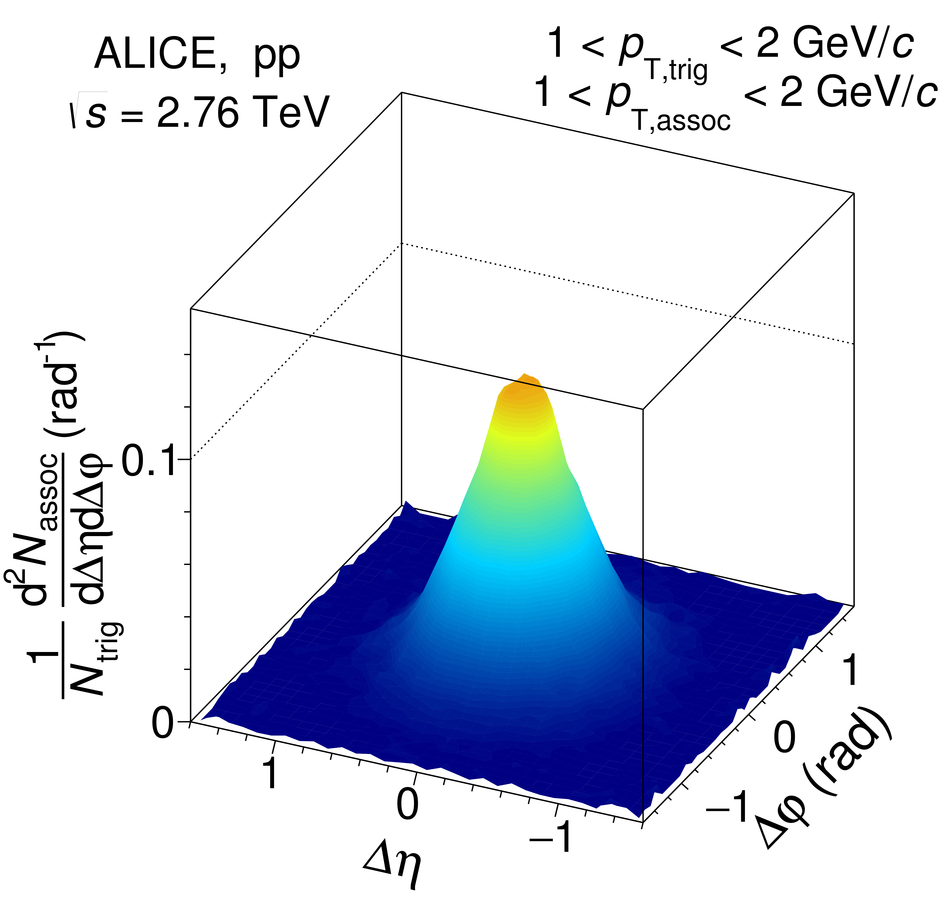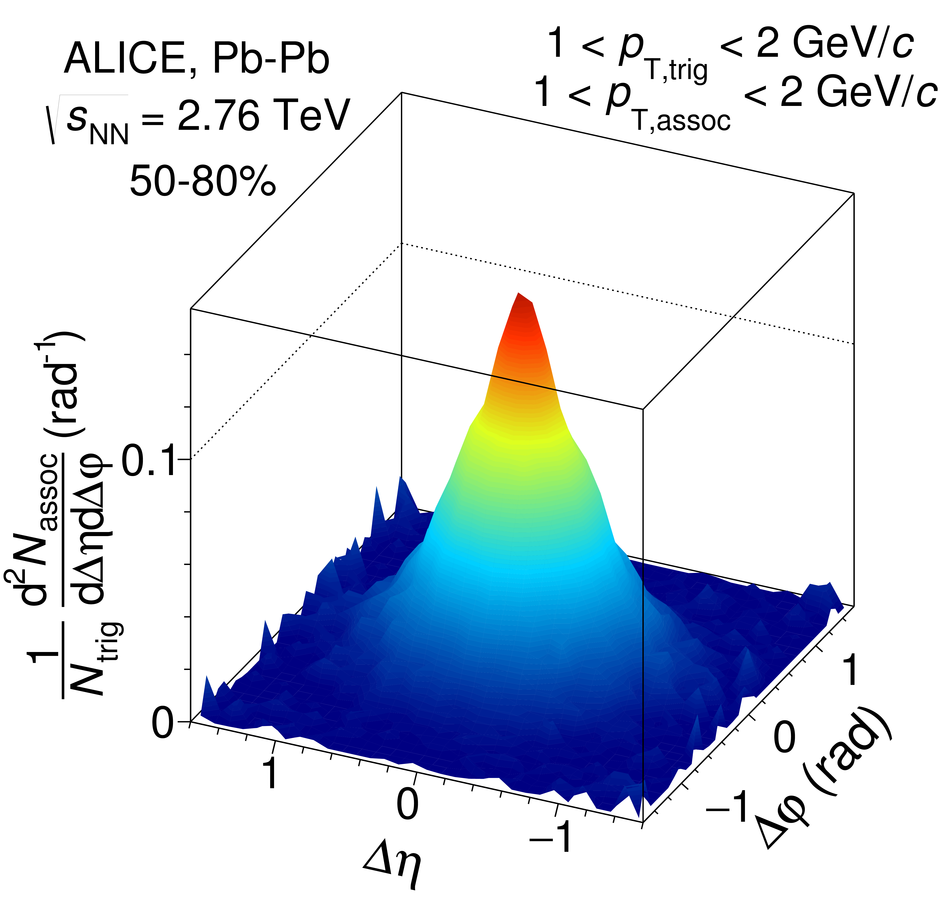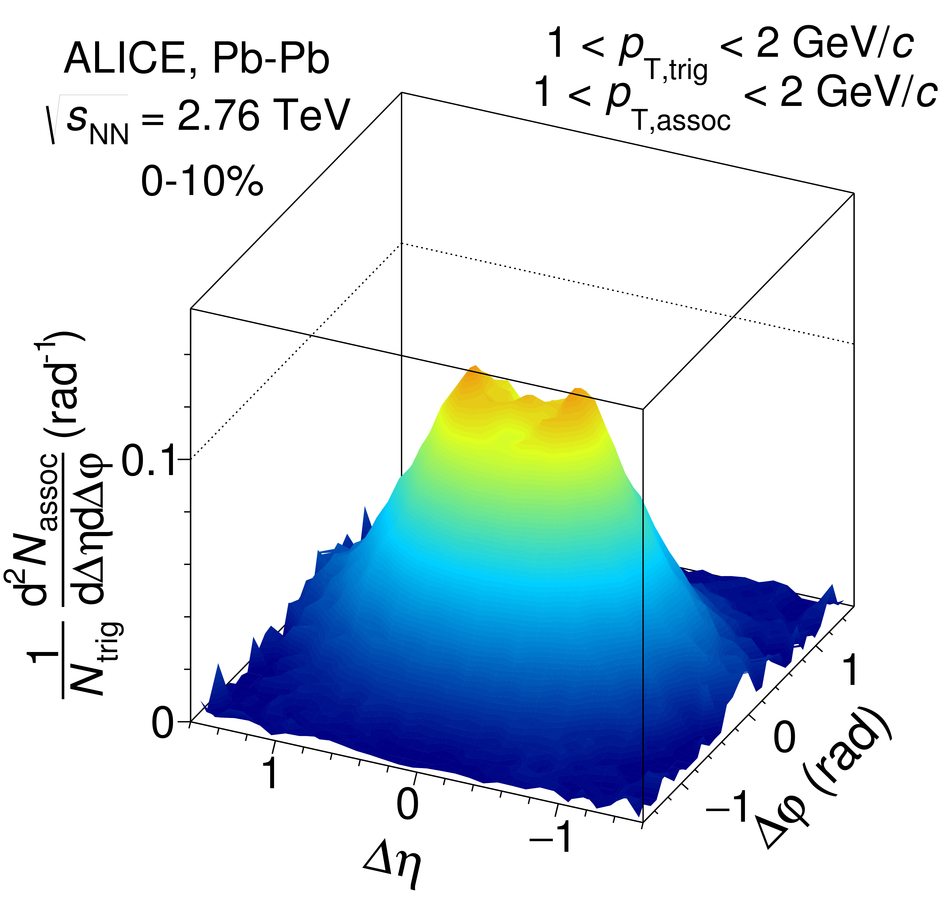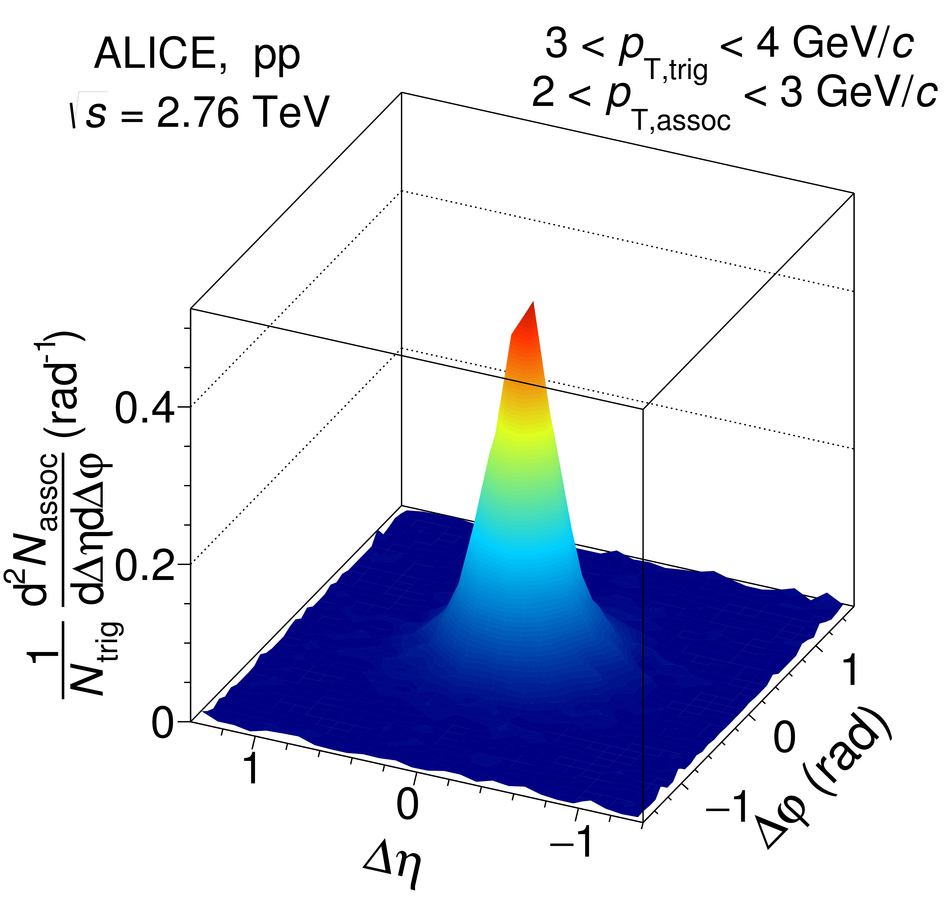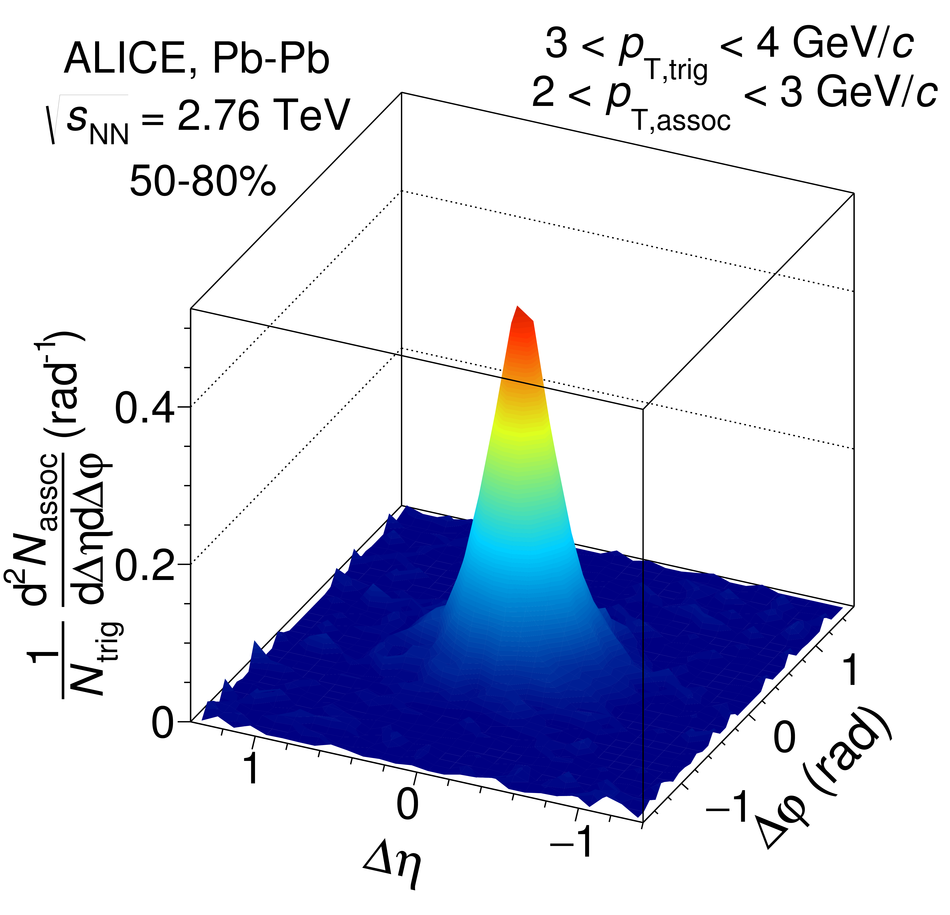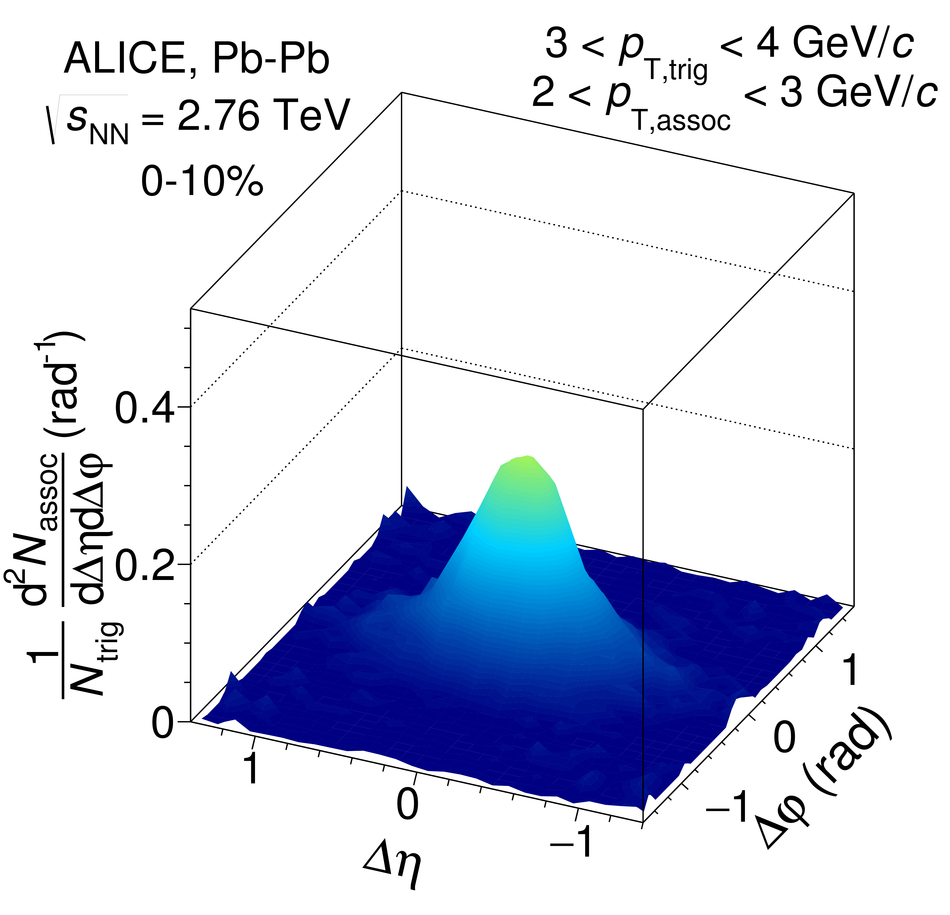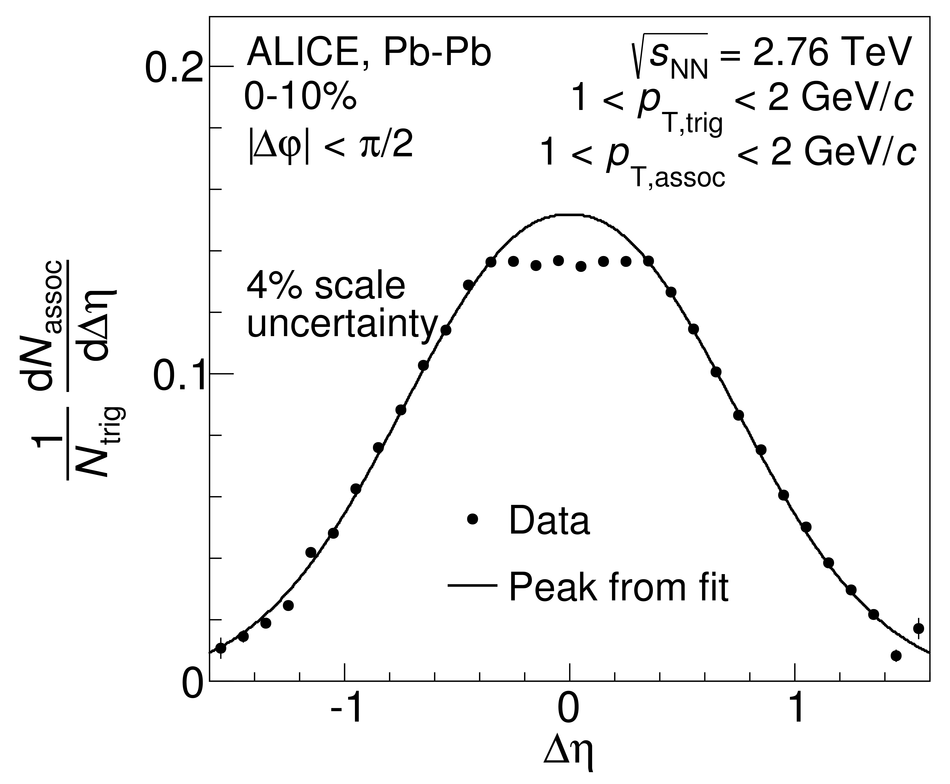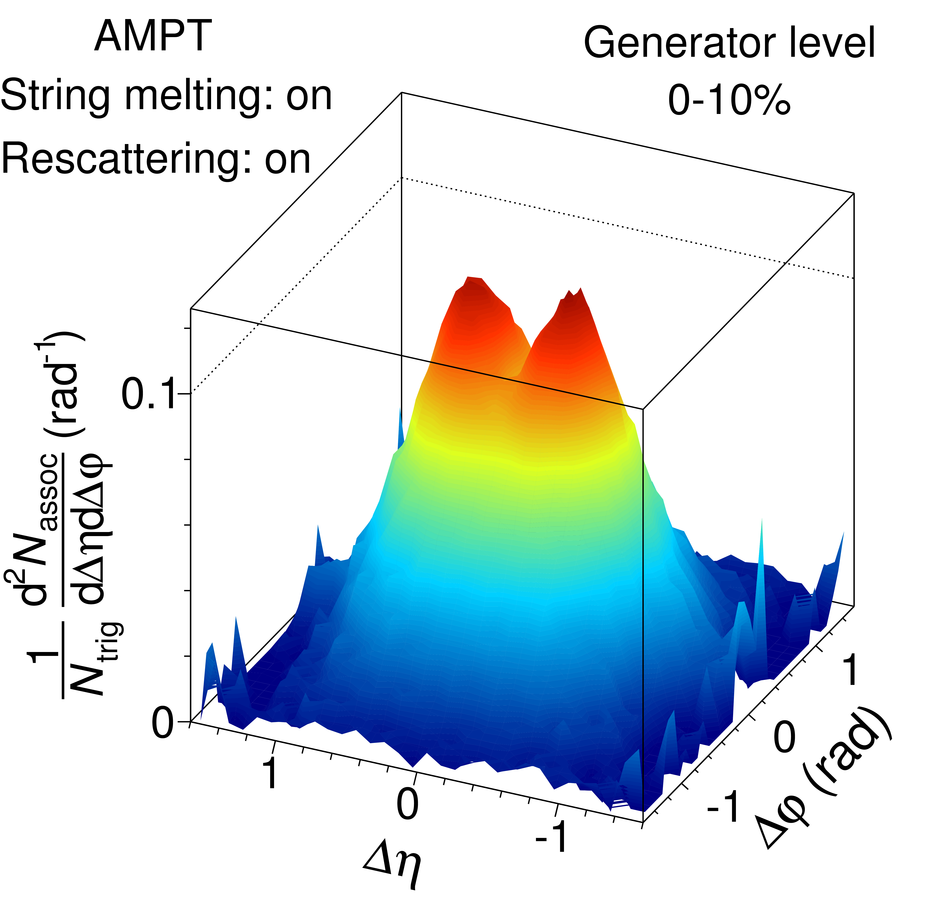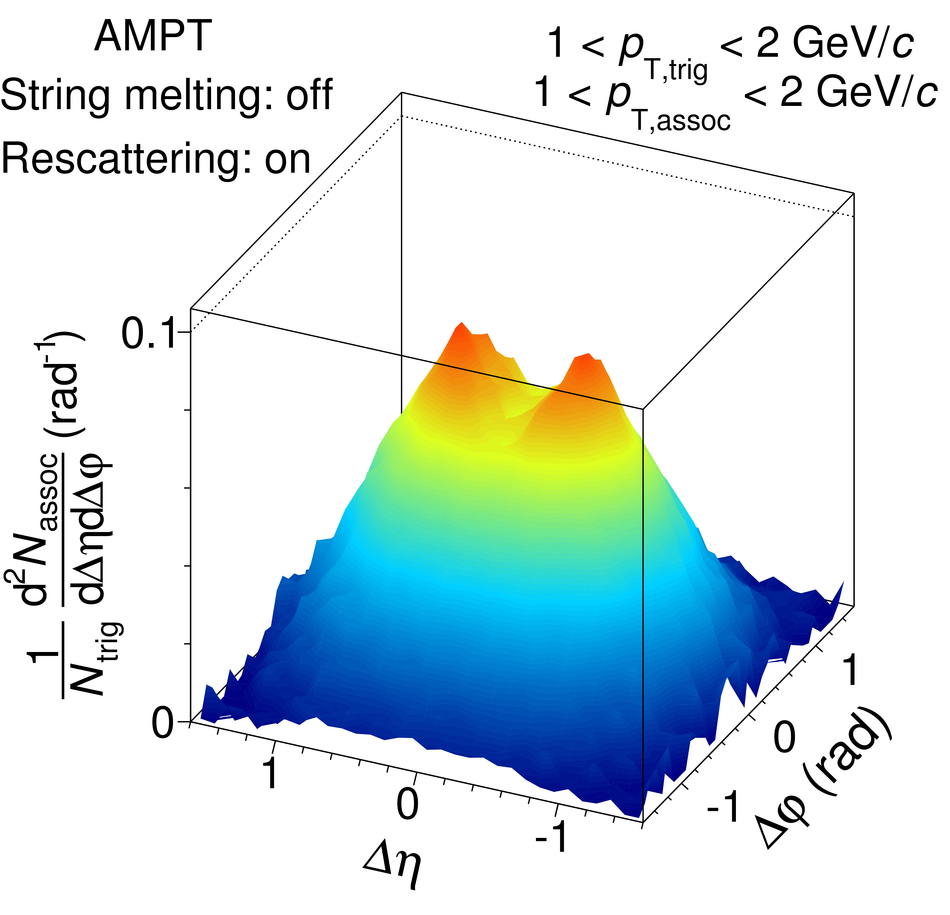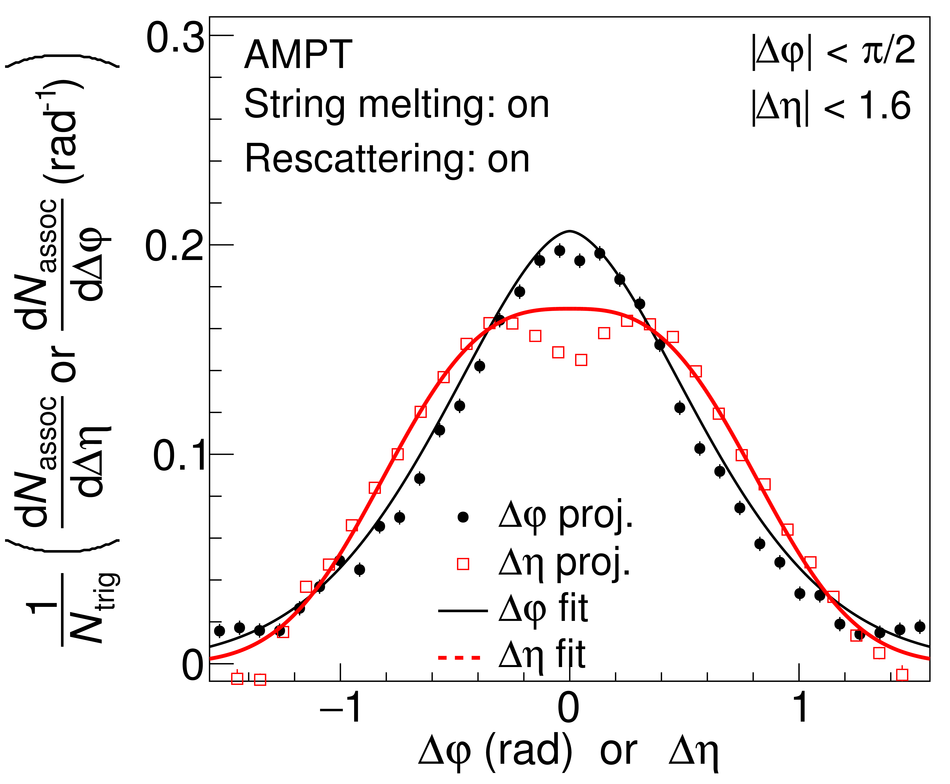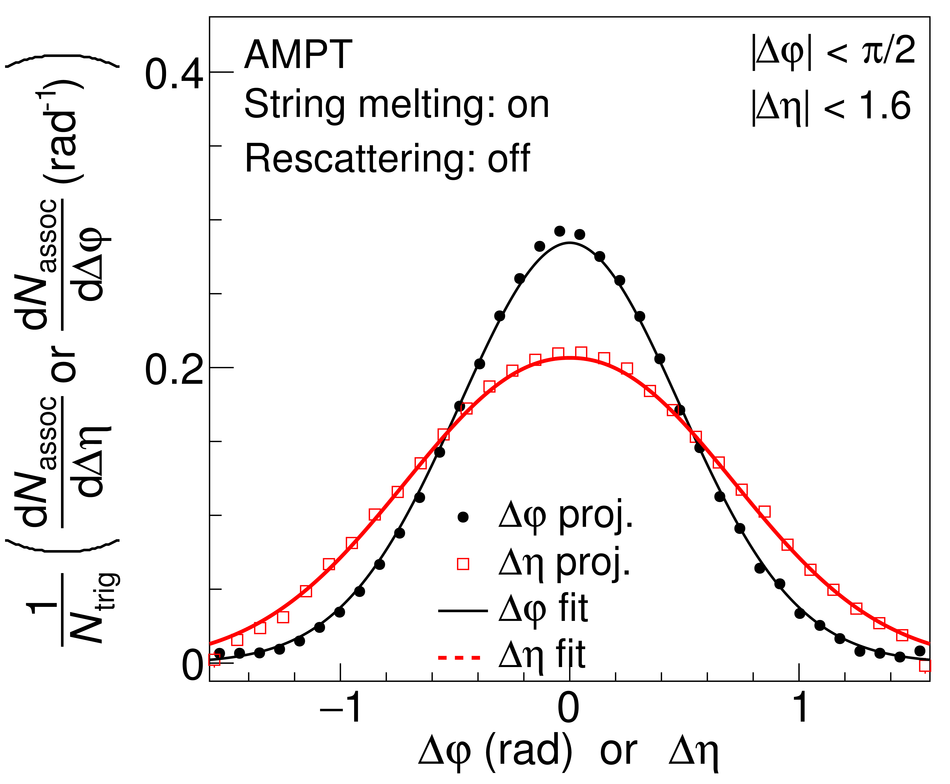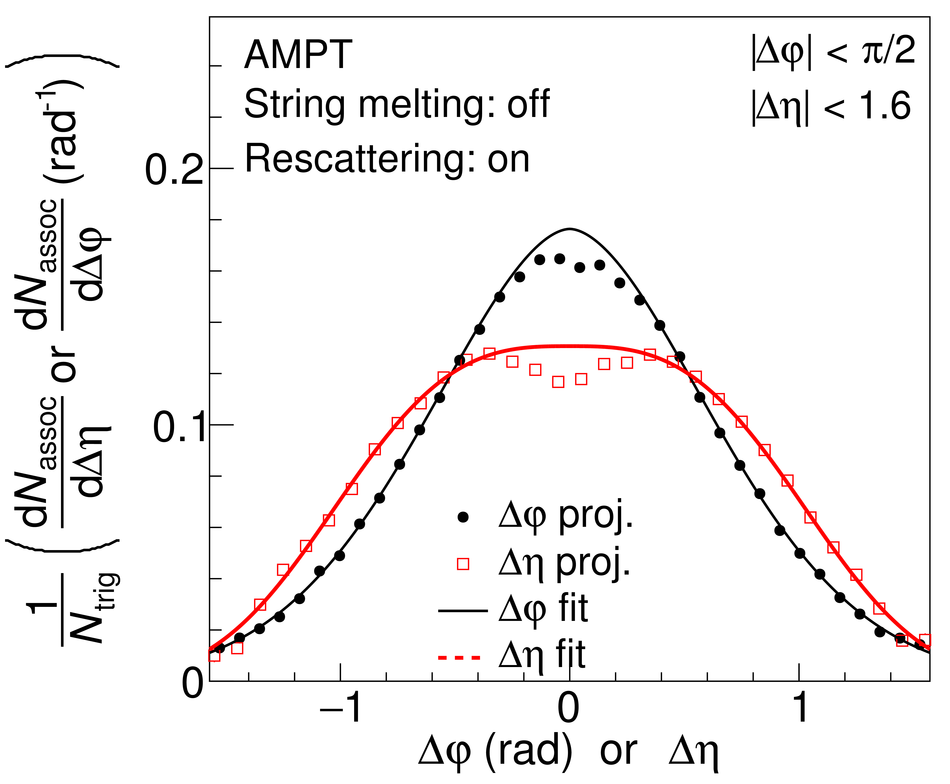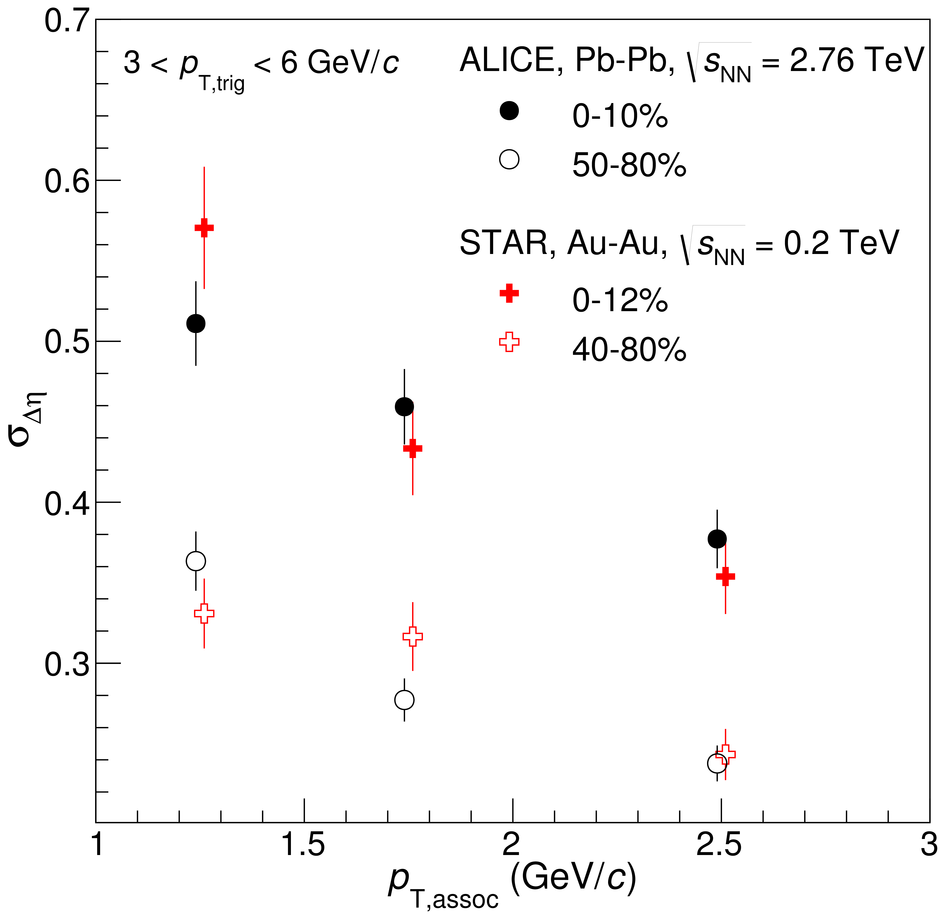In two-particle angular correlation measurements, jets give rise to a near-side peak, formed by particles associated to a higher $p_{\mathrm{T}}$ trigger particle. Measurements of these correlations as a function of pseudorapidity ($\Delta\eta$) and azimuthal ($\Delta\varphi$) differences are used to extract the centrality and $p_{\mathrm{T}}$ dependence of the shape of the near-side peak in the $p_{\mathrm{T}}$ range $1 <~ p_{\mathrm{T}} <~$ 8 GeV/c in Pb-Pb and pp collisions at $\sqrt{s_{\mathrm{NN}}}$ = 2.76 TeV. A combined fit of the near-side peak and long-range correlations is applied to the data and the peak shape is quantified by the variance of the distributions. While the width of the peak in the $\Delta\varphi$ direction is almost independent of centrality, a significant broadening in the $\Delta\eta$ direction is found from peripheral to central collisions. This feature is prominent for the low $p_{\mathrm{T}}$ region and vanishes above 4 GeV/c. The widths measured in peripheral collisions are equal to those in pp in the $\Delta\varphi$ direction and above 3 GeV/c in the $\Delta\eta$ direction. Furthermore, for the 10\% most central collisions and $1 <~ p_{\mathrm{T, assoc}} <~$ 2 GeV/c, $1 <~ p_{\mathrm{T, trig}} <~$ 3 GeV/c a departure from a Gaussian shape is found: a depletion develops around the centre of the peak. The results are compared to AMPT model simulations as well as other theoretical calculations indicating that the broadening and the development of the depletion is connected to the strength of radial and longitudinal flow.
Phys. Rev. C 96 (2017) 034904
HEP Data
e-Print: arXiv:1609.06667 | PDF | inSPIRE
CERN-EP-2016-228


